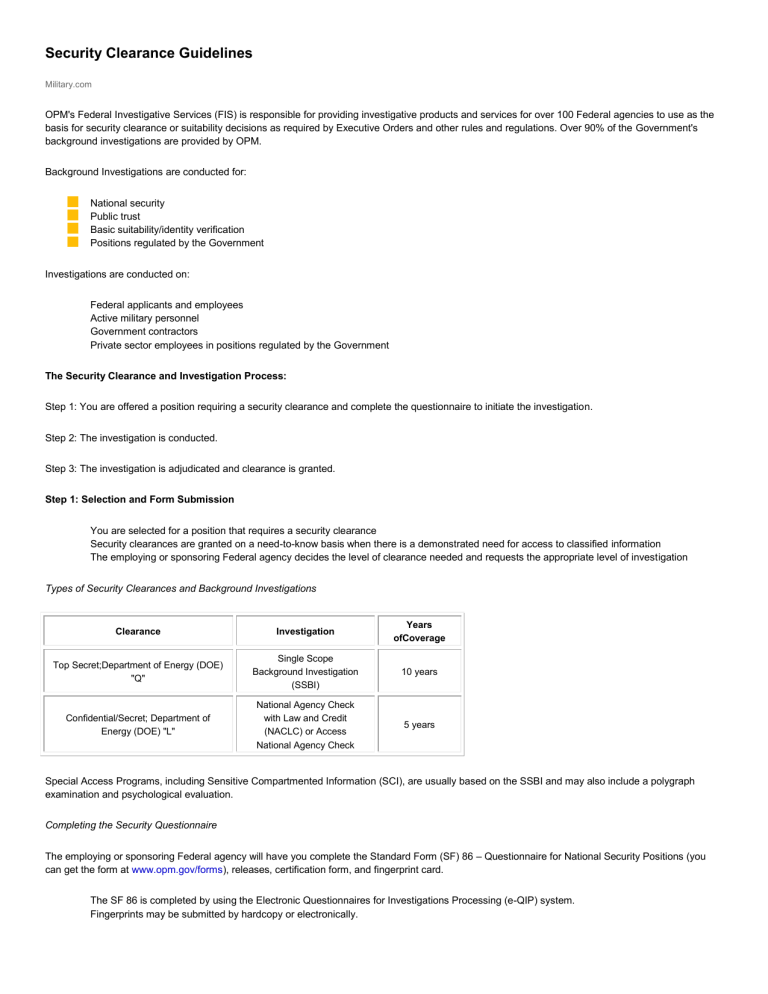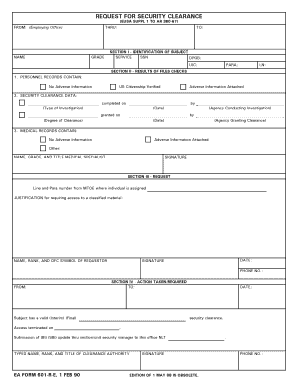Security Clearance Regulation Army
Security Clearance Regulation Army: A Comprehensive Guide
Security clearance is a crucial aspect of the military. It ensures that only trusted individuals have access to classified information and sensitive areas. In the United States Army, security clearance guidelines are strictly followed to maintain the integrity and security of our nation. In this article, we will delve into the various security clearance levels and provide you with essential information to understand this critical process.
Understanding Security Clearance Levels

When it comes to security clearances in the Army, different levels exist based on the nature of the classified information and the tasks an individual is assigned. Let's explore the main security clearance levels:
1. Confidential Security Clearance

The first level of security clearance is Confidential. This clearance level enables access to information or areas that could potentially cause damage to national security if mishandled. Individuals with a Confidential clearance may be granted access to limited classified data related to their assigned duties.
2. Secret Security Clearance

Secret security clearance is the next tier in the hierarchy. Personnel with Secret clearance have access to classified information that could potentially cause serious damage to national security if misused or disclosed. This level is often required for positions involving substantial responsibility or exposure to highly sensitive information.
3. Top Secret Security Clearance

The highest level of security clearance in the Army is Top Secret. This clearance level grants access to information or areas that, if compromised, could cause exceptionally grave damage to national security. Top Secret clearance is typically reserved for positions where individuals deal with highly sensitive intelligence and play a significant role in national defense.
It is important to note that security clearances are subject to periodic reinvestigations to ensure ongoing eligibility and reliability.
Frequently Asked Questions (FAQs)
Here are some frequently asked questions regarding security clearances in the Army:
1. How Do I Apply for a Security Clearance?
To apply for a security clearance, you must be sponsored by a government agency or a cleared contractor. The sponsoring organization initiates the process by submitting your application to the appropriate security office. The application involves comprehensive background checks, a review of your personal history, and interviews with references.
2. Can I Lose My Security Clearance?
Yes, you can lose your security clearance if you fail to adhere to guidelines and engage in conduct that raises concerns about your reliability or trustworthiness. Common reasons for clearance revocation include substance abuse, financial irresponsibility, unauthorized disclosure of classified information, and criminal activities.
3. How Long Does the Security Clearance Process Take?
The duration of the security clearance process can vary depending on multiple factors such as the level of clearance, backlog in processing, and the complexity of the investigation. Generally, it can take several months to a year to complete the entire process.
Advantages of Obtaining a Security Clearance
Having a security clearance in the Army comes with various advantages:
- Increased Employment Opportunities: Holding a security clearance can open doors to a wide range of job opportunities in both government and private sectors, especially in positions requiring access to sensitive information.
- Higher Salaries: Positions that require a security clearance often offer higher salaries due to the level of trust associated with such roles.
- Personal Growth and Development: Jobs that involve clearance often provide challenging and rewarding experiences that contribute to personal growth and professional development.
Conclusion
Security clearance levels in the Army are essential to maintain the security and integrity of our nation's classified information. By adhering to strict guidelines and ensuring individuals with the appropriate level of trust access sensitive information, we can safeguard our country's interests effectively. Remember, the application process for security clearances can be complex and time-consuming, but the benefits are invaluable. If you are considering a military career or a position that requires a security clearance, follow the regulations outlined in this guide to navigate the process smoothly and embark on an exciting and meaningful journey.
What’s A Security Clearance Worth? | Infographic, Security, Military
 Image Source : www.pinterest.com
Image Source : www.pinterest.com clearance security
Security Clearance Guidelines
 Image Source : studylib.net
Image Source : studylib.net Security Clearance Levels
 Image Source : veteran.com
Image Source : veteran.com How To Get A Security Clearance (Without Joining The Military!) - YouTube
 Image Source : www.youtube.com
Image Source : www.youtube.com Security Clearance Form - Fill And Sign Printable Template Online
 Image Source : www.uslegalforms.com
Image Source : www.uslegalforms.com The Importance Of Security Clearance In Your Military Transition In
 Image Source : www.pinterest.com
Image Source : www.pinterest.com Security Clearance For Army
 Image Source : nuemanjlg.blogspot.com
Image Source : nuemanjlg.blogspot.com Security Clearance Levels (2023)
 Image Source : cryptocoached.com
Image Source : cryptocoached.com Security clearance guidelines. Security clearance form. Security clearance levels (2023). Security clearance levels. Security clearance for army